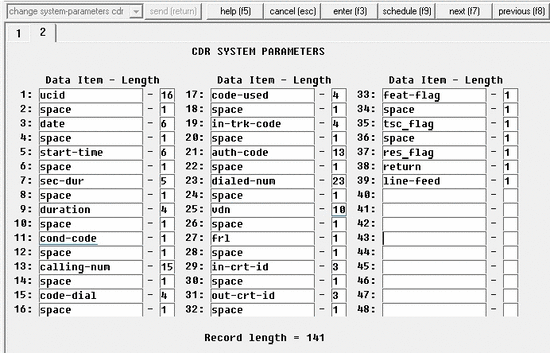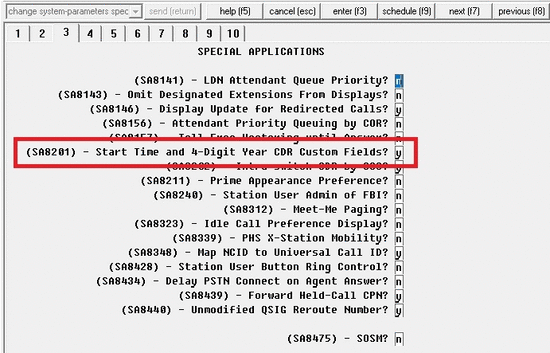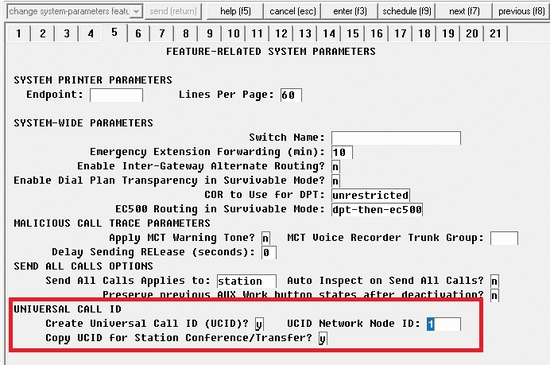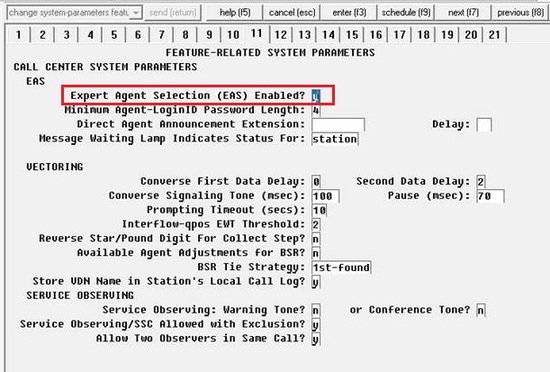Avaya (Customized Output Format Call Center)
This data is being extracted with help of the "Advanced PBX Data Logger" software only. It may not be applicable for other software titles.
Avaya Communication Manager 4.X
1. Change node-name ip and add a new entry that hosts our PBX Data Logger application.
2. Change ip-services add a new entry of CDR1, and fill out the rest of the values. If you go to page three, you may need to set the "Secure" or "Reliable" option to N.
3. Change system cdr and setup the link how you want it outputted.
4. Disable the switch for "Legacy" output.
5. Our software expects date in MMDDYY format if nothing else is specified explicitly.
Our software does not support Reliable Session Protocol. You need to select another protocol type in your PBX
Launch the Avaya Site Administration software and go to the "CDR Parameter Settings;" tab to configure the CDR format. Please have a look at a record length when you finish setup.
Execute the "change system-parameters special-applications" command to configure custom options. With this option enabled, the PBX will output a call duration with seconds and the full 4-difit year.
The following option allows you to create a unique ID for each call (UCID).
- Create Universal Call ID (UCID) - set to Y
- UCID Network Node ID - specify any unique value (for example, if you have five PBXs, you may use numbers 1..5).
- Copy UCID - set to Y (use the same UCID for transit calls and conferences)
On the page 11, set the "Expert Agent Selection" parameter to Y.
On the page 13, set the "Send UCID to ASAI" parameter to Y.
Finally, execute the "save trans all" command.
Selecting the correct parser for Avaya (Customized Output Format Call Center)
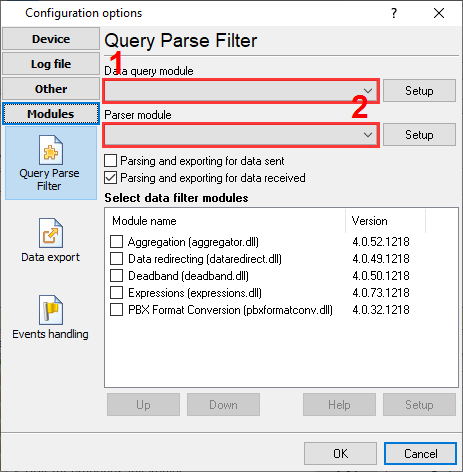
Avaya (Customized Output Format Call Center)
Avaya (Customized Output Format Call Center)
Data items
| Description | Data type | Column name |
|---|---|---|
| Call time | datetime | CALL_TIME |
| Call duration (s) | integer | CALL_DURATION_S |
| Condition code | string | CALL_TYPE |
| Direction | string | DIRECTION |
| Call ID | string | FLAG3 |
| Dialed phone | string | DIALED_PHONE |
| Caller phone | string | CALLER_PHONE |
| Extension | string | EXT |
| Access code dialed | string | FLAG1 |
| Access code used | string | FLAG2 |
| Trunk code | string | TRUNK |
| Auth code | string | AUTH |
| VDN extension number | string | ACC |
| FRL | string | FLAG6 |
| Incoming circuit ID | string | FLAG4 |
| Outgoing circuit ID | string | FLAG5 |
| Flags (feature, Tsc, Res) | string | FLAG7 |
| Feature flag | string | FEAT_FLAG |
| Tsc flag | string | TSC_FLAG |
| Res flag | string | RES_FLAG |
Interested in reports for PBX usage?
We provide the PBX Reports utility, featuring a range of manual, scheduled, and email reports, a built-in web server, among other features. Implement your call accounting system for Avaya (Customized Output Format Call Center). Check our PBX Reports utility.
Want PBX call logs in a database?
This standard feature allows the logger to capture and export SMDR or CDR data in real-time directly to your database. Check our article about call logging to a database.
Avaya related connection settings
Avaya (Customized Output Format ACM 6.0)Avaya (Customized Output Format ACM 4.0)
Avaya (Enhanced Unformatted Output Format ACM 4.0)
Avaya (Expanded Output Format ACM 4.0)
Quick jump to the connection settings for other PBXs or connection formats ↴
Note: Products and companies mentioned here are used only for definition and identification purposes and can be trademarks and/or registered trademarks of the respective companies.
Related topics: Advanced PBX Data Logger
hereCall logging Call accounting SMDR to SQL SMDR Listener Cables and signals
